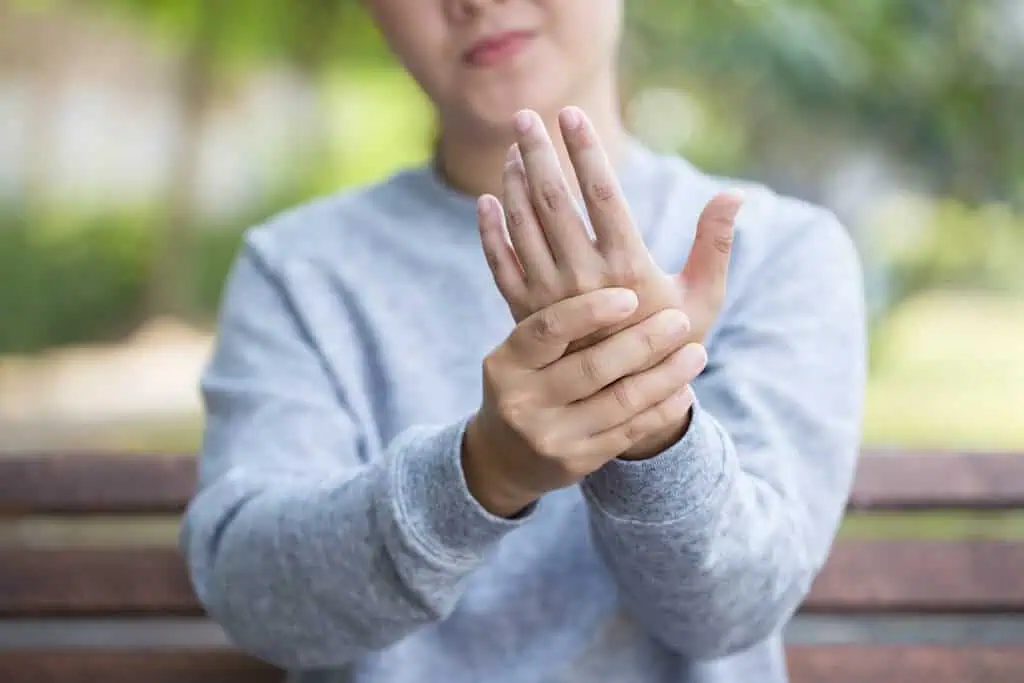Chronic joint pain is typically associated with arthritis, although there are other physical ailments that can lead to joint deterioration and pain. While physical therapy is not a cure for arthritis, it can help to alleviate the pain, increase your range of motion in the affected joints and help you get control over the problem so that it doesn’t get worse. If you are not proactive when it comes to joint pain, it likely will worsen over time. If you’ve been suffering from joint pain for a while, call us to schedule an appointment with a physical therapist.
Arthritis and Joint Pain
There are two main types of arthritis that are the most common culprits when it comes to joint pain: osteoarthritis and rheumatoid arthritis. Here is a closer look at these types of arthritis:
- Osteoarthritis: This is the most common type of arthritis by far. It typically develops later in life and can be caused by poor body mechanics, overuse of the joint, or an injury. The cartilage in joints serves as a natural barrier that lubricates and distributes force during physical activity. When that cartilage breaks down and no longer provides a cushion between adjoining bones, the result is osteoarthritis. The hands, hips, knees, and spine are the most common body parts impacted by osteoarthritis.
- Rheumatoid Arthritis: This is an autoimmune disorder in which the body’s healing systems attack the joints. This causes inflammation of the joints, which can be extremely painful. Rheumatoid arthritis usually begins in the hands, wrists or feet, but it can spread to the hips, knees, or shoulders — getting progressively worse — if you aren’t proactive in combating it. If you have been diagnosed with rheumatoid arthritis, your doctor will likely prescribe pharmaceutical treatments to stave off the symptoms. However, physical therapy can be a tremendous help as well.
Certain ailments like gout, bursitis, lupus, or tendinitis can also contribute to joint pain. The source of your joint pain may cause a specific course of physical therapy that is recommended for you to vary.
Physical Therapy for Joint Pain
During your first visit with a physical therapist, be prepared to talk about your symptoms. If your doctor has already diagnosed the condition that is causing your joint pain, your physical therapist should know this. Your therapist will need to know about the type of joint pain you are experiencing, the times of day when the pain is worse, and any physical activities that you engage in on a regular basis (for example, do you have a job that requires physical labor or sitting at a desk all day or are you retired and less active?). Your therapist will likely run you through a series of simple tests during your first visit. These will be done to test your range of motion, balance, and posture. This information will be used to help create a customized physical therapy regimen to help you relieve the joint pain while strengthening muscles to help support the joints. Your plan of physical therapy will likely contain a combination of body mechanics work, exercises, and manual therapy. Body mechanics involves teaching you the proper way to move, sit, stand, lift objects, and engage in other daily activities, without causing pain to your joints. The exercises will likely be low-impact to relieve pressure on the joints while strengthening your muscles, such as water aerobics. Manual therapy is a specialized type of therapeutic massage that your physical therapist is trained in; manual therapy can help to soften tissues and relieve pain associated with your joint condition. The goal of your physical therapy will be to help you take back control of your life by minimizing the joint pain. Call our office today to schedule your first appointment with a physical therapist.

